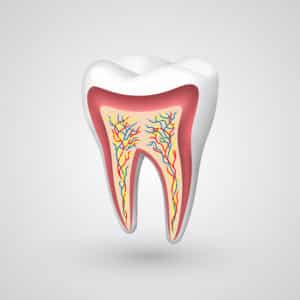Your tooth is comprised of two main zones; the crown of the tooth that rests above the gum line, and the root of the tooth that is held within a socket in the jawbone. This root is connected to the tooth’s pulp that houses its nerves and blood vessels, and which travel through the root’s inner canal to be nourished by the jawbone. When any of a tooth’s interior regions is exposed to or infected by oral bacteria, the risk of severe infection and tooth loss grows exponentially, making root canal treatment the best option for saving the tooth.
A Last Resort for Severe Tooth Infection
Tooth infection is progressive, and in many cases, it can be treated long before it becomes severe enough to require root canal treatment. However, if you hesitate long enough, then the infection can reach your tooth’s pulp before you realize it. Also, a damaged tooth may pose a more immediate threat by instantly exposing the tooth’s inner pulp tissues to oral bacteria. In either case, root canal treatment involves removing the inner tissues, then cleaning and sealing the root canal and pulp to barricade the tooth against harmful bacteria.
The Importance of Saving Your Tooth
Hesitating to undergo root canal treatment may lead to the need for tooth extraction, but saving the tooth is always preferable if it’s possible. Root canal treatment can help patients avoid losing or having to extract a compromised tooth. Saving the tooth can help prevent issues related to tooth loss, such as your remaining teeth shifting, the jawbone growing weaker without the tooth’s root, and more.


